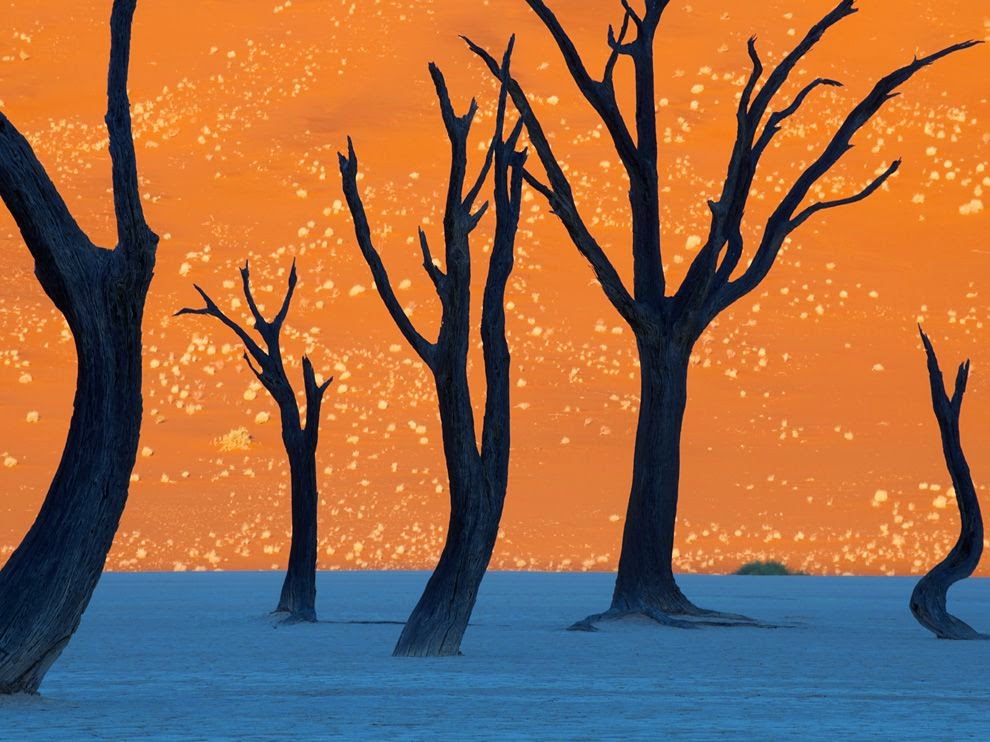 |
| The goats just had babies! |
Before moving to Namibia, the words “African animals”
brought to my mind the opening scene of The Lion King. In four months, I have
seen only one giraffe, a handful of baboons, and the occasional roadside
warthog. Despite my lack of exotic encounters, I have plenty of animal friends.
Some are more friendly than others. I am particularly close
with my wall spiders Ofluffya and Owhiskas. The harmless wall spider is about
the size of my palm, with a body that lies flat against the wall—a feature that
makes it difficult to kill. My first night I threw a Chaco at Ofluffya. I
nailed her, but she scurried away unscathed. So I gave up and adopted her
instead.
 |
| Ofluffya relaxing above my bed. |
A short time later I found her husband Owhiskas. Seeing that
I can’t neuter a spider, I sternly warned them not to have babies. They
promptly ignored me and now we have Osasha—whom I named after my late Siamese.
While I am fond of this arachnid family, I will kill any more additions. I
think Ofluffya and Owhiskas took this second warning more seriously: I haven’t
seen them in a week.
The void left by Owhiskas and Ofluffya has unfortunately
been filled by three roosters. My regular readers know that a few months ago I
reluctantly slaughtered a hen. That ambivalence has evaporated in the African
sun. I would gleefully strangle these roosters. Every night between three and
five a.m. they take shifts crowing beneath my window. And every night I delude
myself into thinking that if I ignore them, they will go away. They don’t. It
always seems like too much work to leave my mosquito net, find my headlamp, and
chase them away. But one day I will snap. Imagine me as Jack Nicholson from The Shining, ax in hand maniacally
stalking the infernal fowl through a maze of huts.
 |
| I hate this animal. |
I might introduce my host family to Thanksgiving. There
aren’t any turkeys, but the roosters will taste just fine.
Though I hate roosters, my affection for other farm animals
has grown. Last week, my tate (pronounced “tah-tey,” means “dad”) surprised
us with a calf. I initially named him Okamati, “little brother.” But in his
first three nights he managed to wriggle out of two leashes and open three
gates. My tate and brother found him tangled in the bush a kilometer away. I
have since renamed him Okahoudini. Okahoudini loves me. Sometimes I love him
too. This morning I opened my door to find him at my feet sleeping in a puddle
of calf diarrhea. I did not love him then.
 |
| My host brother Absalom and Okahoudini. |
Diarrhea aside, all the animals I have mentioned so far have
been benign enough. But there is one foe lurking in the forest that I have
fortunately not met: the black mamba. Before coming to Namibia, my knowledge of
the black mamba was largely informed by Kill
Bill. I was under the impression the venom could kill me instantly.
However, my snake book says death can take anywhere between three and fifteen
hours. Vague but oddly comforting—the nearest hospital is only thirty minutes
away.
I have asked many people in the village about mambas, and
there is a clear gender division. The tates (all men in Oshikwanyama are
referred to as tate) boast tales of striking a mamba out of a tree 15 meters
away using a single brick. The memes, on the other hand, say they have lived
here their wholes lives and have never seen one. Call it gender bias or wishful
thinking, but I trust the memes.
To be fair, Namibia is teeming with wildlife. I live about
four hours away from Etosha National Park, where it’s common—I’ve heard—to see
the Big Five African animals in a single afternoon. I hope to visit soon. Maybe
I will load Ofluffya, Owhiskas, and Okahoudini into the pick-up truck and make
it a family vacation. We can even bring the roosters: they’ll make excellent
lion bait.












- Follow Us on Twitter!
- "Join Us on Facebook!
- RSS
Contact